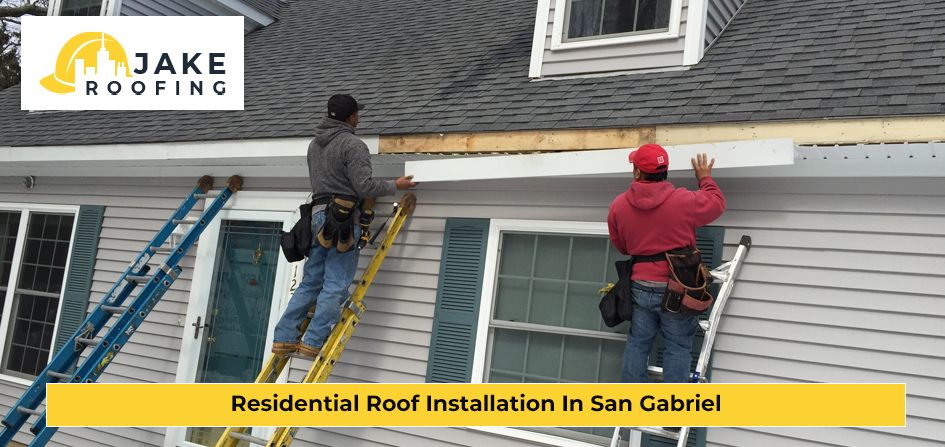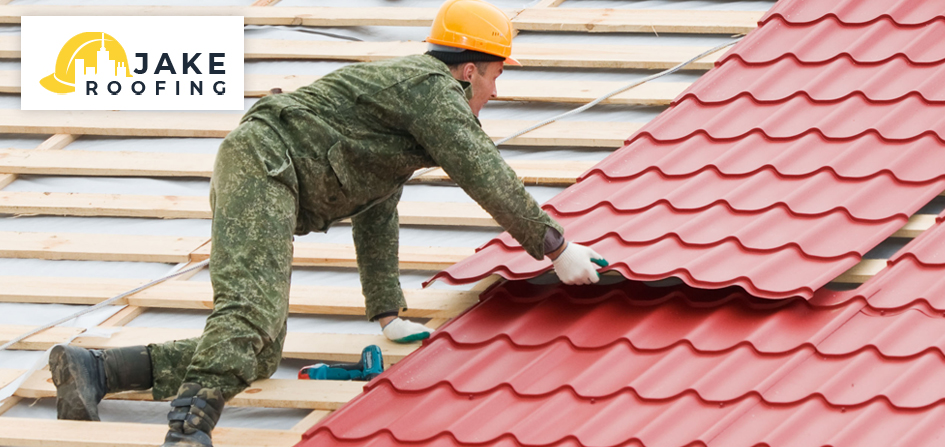The Different Roofing Designs
When you are looking at residential roof installation in San Gabriel, one of the critical things that you should do is choose the right design
Gable Roof
A gable roof is suitable for various architectural styles and provides excellent water drainage. It is a versatile option for most residential buildings
Hip Roof
Hip roofs are ideal for areas with high winds or hurricane-prone regions. They offer enhanced stability and durability.
Mansard Roof
This roof design is ideal for homeowners who want to maximize living or storage space in the attic. Mansard roofs are often seen in French-inspired or Victorian-style homes.

Flat Roof
Flat roofs are commonly used in modern and contemporary architecture. They provide a sleek and minimalist appearance, and their flat surface can be utilized for rooftop gardens, solar panels, or outdoor recreational areas
Gambrel Roof
Gambrel roofs resemble barn roofs and are suitable for homeowners who prefer a traditional or rustic look. They offer extra space in the attic and are often seen in farmhouses or colonial-style homes.
Butterfly Roof
This unique roof design features two upward-sloping sections that meet in the middle, resembling the wings of a butterfly. It creates a distinctive architectural statement and allows for ample natural light and ventilation
Shed Roof
Shed roofs have a single slope and are commonly used for additions, garages, or modern-style homes. They provide a simple and cost-effective roofing solution.

Choosing the Ideal Roofing Material
When you are looking to choose the right roofing material for residential roof installation in San Gabriel, it is important to consider the architectural style. Here are some of the options that you can choose:
| Architectural Style | Ideal Roofing Material |
|---|---|
| Spanish Colonial | Clay Tiles, Spanish S Tiles |
| Craftsman | Composition Shingles |
| Victorian | Slate, Wood Shakes |
| Mid-Century Modern | Flat or Low-Slope Roofing |
| Mediterranean | Clay Tiles, Spanish S Tiles |
| Ranch | Composition Shingles |
| Tudor | Wood Shakes, Slate |
| Contemporary | Metal Roofing |
| Bungalow | Composition Shingles |
| Colonial Revival | Asphalt Shingles |
The Different Options for Materials for Residential Roof Installation
Asphalt Shingles
3-Tab Shingles
These are the most basic and economical asphalt shingles, featuring a flat, single-layer design with three tabs
Architectural Shingles
Also known as dimensional or laminate shingles, they have a multi-layered construction that adds depth and visual appeal to the roof.
Designer Shingles
These premium asphalt shingles offer a wide range of styles, colors, and textures, mimicking the look of other high-end materials.
Metal Roofing
Standing Seam Metal
This type of metal roofing has raised seams that run vertically along the roof’s surface, providing exceptional durability and a sleek appearance
Metal Shingles
They resemble traditional roofing materials like wood, slate, or tile, while offering the benefits of metal, such as longevity and low maintenance
Metal Tiles
These metal roofing tiles mimic the look of ceramic or clay tiles, providing a durable and lightweight alternative with various style options.
Clay Tiles
Spanish S Tiles
These classic clay tiles have an “S” shape and are often seen in Mediterranean or Spanish architectural styles, offering a timeless and elegant look.
Barrel Tiles
Also known as S-Tiles, they have a semi-cylindrical shape, creating a distinctive and charming appearance that complements various home designs
Concrete Tiles
Flat Tiles
Concrete flat tiles have a clean and modern look, providing durability and weather resistance while offering versatility in terms of color and texture
Low Profile Tiles
These concrete tiles have a lower profile and a flatter appearance compared to traditional concrete tiles, delivering a more contemporary aesthetic
Wood Shingles/Shakes
Cedar Shingles
Made from cedar wood, these shingles offer natural beauty, excellent insulation, and resistance to insects and decay, giving a rustic and warm appeal
Cedar Shakes
Similar to shingles, cedar shakes have a thicker and more textured appearance, providing a charming, handcrafted look for traditional or cottage-style homes
Slate
Natural Slate
Natural slate offers unparalleled beauty, durability, and longevity. It comes in various colors and textures, creating a distinctive and elegant roof.
Synthetic Slate
Synthetic slate is a more affordable alternative to natural slate, offering similar aesthetics and durability while being lighter in weight.
Synthetic Roofing Materials
Synthetic Shingles
These roofing materials replicate the appearance of traditional materials like wood, slate, or shake, but with improved durability, longevity, and ease of installation.
Rubber Roofing
Made from recycled materials, rubber roofing offers exceptional resistance to weathering and is an eco-friendly option that provides flexibility and durability.
Composite Roofing
Composite Shingles
Composite shingles combine different materials, such as asphalt, fiberglass, and recycled materials, to create a durable, lightweight, and cost-effective roofing solution.
Composite Tiles
Similar to composite shingles, composite tiles offer the look of natural materials like slate or wood, with added durability, affordability, and ease of installation.
The Process of Residential Roof Installation in San Gabriel
Roof Inspection
The process starts with the existing roof to assess its condition and determine if any repairs or replacements are needed before installation
Material Selection
We collaborate with you to choose the appropriate roofing material, considering factors such as aesthetics, durability, climate suitability, and budget
Permits and Approvals
The necessary permits and approvals are obtained from the local authorities to ensure compliance with building codes and regulations
Removal of Old Roof
If necessary, the old roofing material is removed to prepare the roof deck for installation. This includes stripping off shingles, underlayment, and any damaged or deteriorated sections.
Installation of Underlayment
A layer of underlayment, such as felt or synthetic material, is applied to the roof deck to provide an additional barrier against moisture.
Installation of Roofing Material
The chosen roofing material, whether it’s asphalt shingles, metal panels, tiles, or other options, is carefully installed according to manufacturer guidelines and industry best practices.
Flashing and Ventilation
Flashing is installed around roof penetrations and at vulnerable areas to prevent water infiltration. Proper ventilation systems are also installed to ensure air circulation and prevent moisture buildup.
Finishing Touches
The installation is completed by adding ridge caps, trim, gutters, and downspouts, as well as any necessary sealants or coatings for added protection.
Cleanup and Inspection
The work area is thoroughly cleaned up, and a final inspection is conducted to ensure the roof installation meets quality standards and adheres to specifications
Warranty and Maintenance
You are provided with warranty information for the roofing material and guidance on regular maintenance to prolong the lifespan of the roof. Get in touch with Jake Roofing in San Gabriel to know more.

Frequently Asked Questions
Before choosing the right roofing material for your home, there are several factors you should consider:
Climate: Consider the weather conditions in your area. Some roofing materials perform better in certain climates. For example, metal roofing is durable and can withstand extreme weather conditions, while clay or concrete tiles are suitable for hot and dry climates.
Durability: Assess the lifespan and durability of the roofing material. Consider how long the material is expected to last and how well it can withstand the elements, such as wind, rain, and hail.
Looks: Choose a roofing material that complements the architectural style of your home and enhances its overall curb appeal. Consider the color, texture, and style options available for different materials.
Cost: Determine your budget for the roofing project. Different materials have varying costs, including the material itself and the installation expenses. Factor in the long-term maintenance costs as well.
Energy Efficiency: Some roofing materials have better insulation properties and can help reduce heating and cooling costs. Look for materials with high energy efficiency ratings to improve the energy efficiency of your home.
Maintenance: Consider the level of maintenance required for the roofing material. Some materials, like asphalt shingles, are relatively low maintenance, while others, like wood shakes, may require regular upkeep.
Local Regulations: Check local building codes and regulations to ensure that the roofing material you choose complies with the requirements in your area.
Removing the old roof is necessary to ensure the proper installation of the new roofing system. In some cases, we include the cost of removing and disposing of the old roof in the estimate, while in others, we may charge it separately.
There are different schedules for payment and they would be finalized after having a detailed discussion with you. You can choose from the different milestones and pay according to them. Speak to us to know more about the payment schedules.
